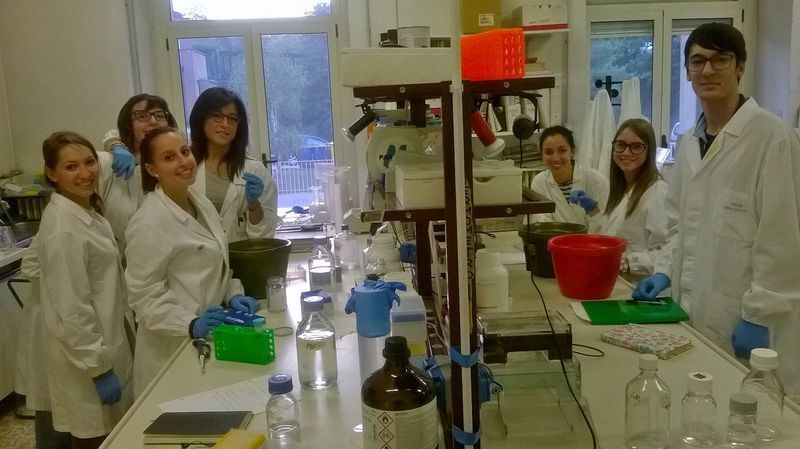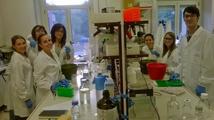Biologia Applicata
Applied Biology
Componenti
- Retta Saverio Francesco (Coordinatore)
- Perrelli Andrea
- Panuzzo Cristina
- Ferraris Chiara
Contatti

Settore ERC
Attività
Professor Retta's research activities have spanned the last 30 years, focusing mainly on the study of molecular mechanisms of cell signaling and the pathogenesis of human diseases, including cancer and cerebrovascular diseases. In particular, recent studies have significantly contributed to the understanding of molecular mechanisms underlying the pathogenesis of Cerebral Cavernous Malformation (CCM), opening novel perspectives for disease prevention and treatment.
Cerebral Cavernous Malformation (CCM) is a major cerebrovascular disease of genetic origin affecting 0.3-0.5% of the population and characterized by abnormally enlarged and leaky capillaries that predispose to seizures, neurological deficits and intracerebral hemorrhage (ICH). It occurs sporadically or can be inherited as autosomal dominant condition with incomplete penetrance and highly variable expressivity. Three disease genes have been identified: KRIT1 (CCM1), CCM2 and CCM3; however, pharmacological treatment is not yet available.
In particular, Professor Retta's research group has originally demonstrated that KRIT1 plays an important role in maintaining intracellular ROS homeostasis, thereby limiting altered redox signaling and oxidative damage and preserving cellular resistance to oxidative stress. This antioxidant and cytoprotective role is associated with a KRIT1-dependent modulation of master regulators of cell responses to oxidative stress, including FoxO1, SOD2 and c-Jun, as well as with the maintenance of mitochondrial quality control, suggesting that altered redox signaling and oxidative stress contribute to CCM pathogenesis by influencing its major phenotypic hallmarks, including destabilization of endothelial cell-cell junctions, increased vascular permeability, and enhanced angiogenic and inflammatory responses.
In this context, Prof. Retta has founded and coordinates CCM Italia, an Italian multidisciplinary research network focused on CCM disease (https://www.ccmitalia.unito.it/), which is aimed at sharing expertise and resources to facilitate breakthroughs in the identification of pathogenic mechanisms and genetic susceptibility factors associated with CCM disease onset and severity, and the development of innovative and effective diagnostic approaches and therapeutic strategies for genetic diagnosis and treatment of this disease. Indeed, the CCM Italia research network consists of several clinical and basic research centers across Italy, and involve multiple clinicians and researchers with mutual interest and complementary expertise in the field of cerebrovascular diseases, including neurosurgeons, neurologists, neuroradiologists, pathological anatomists, geneticists, and cellular and molecular biologists.
Studies on CCM disease have been supported by grants from the Telethon Foundation.
Prodotti della ricerca
Pubblicazioni su riviste internazionali: 5 recenti prodotti rappresentativi
- Perrelli A, Retta SF. (2023). Identification of galectin-3 as a novel potential prognostic/predictive biomarker and therapeutic target for cerebral cavernous malformation disease. Genes & Diseases. 2023 Apr 3;11(1):67-71. doi: 10.1016/j.gendis.2023.02.045.
- Perrelli A, Ferraris C, Berni E, Glading AJ, Retta SF. (2023). KRIT1: A Traffic Warden at the Busy Crossroads Between Redox Signaling and the Pathogenesis of Cerebral Cavernous Malformation Disease. Antioxidants & Redox Signaling. 2023 Mar;38(7-9):496-528. doi: 10.1089/ars.2021.0263. Epub 2022 Nov 1.
- Perrelli A, Retta SF. (2021). Polymorphisms in genes related to oxidative stress and inflammation: Emerging links with the pathogenesis and severity of Cerebral Cavernous Malformation disease. Free Radical Biology and Medicine. 2021 August 20;172:403-417. DOI: 10.1016/j.freeradbiomed.2021.06.021.
- De Luca E, Perrelli A, Swamy H, Nitti M, Passalacqua M, Furfaro AL, Salzano AM, Scaloni A, Glading AJ, Retta SF. (2021). Protein kinase Cα regulates the nucleocytoplasmic shuttling of KRIT1. Journal of Cell Science. 2021 Feb 4;134(3):jcs250217. DOI: 10.1242/jcs.250217.
- Perrelli A, Fatehbasharzad P, Benedetti V, Ferraris C, Fontanella M, De Luca E, Moglianetti M, Battaglia L, Retta SF. (2021). Towards precision nanomedicine for cerebrovascular diseases with emphasis on Cerebral Cavernous Malformation (CCM). Expert Opinion on Drug Delivery. 2021 Jan 23;18(7):849-876. DOI: 10.1080/17425247.2021.1873273.
Pubblicazioni su riviste internazionali: link ai database PubMed e Scopus
- PubMed: https://pubmed.ncbi.nlm.nih.gov/?term=Retta+SF&sort=date
- Scopus: https://www.scopus.com/authid/detail.uri?authorId=6603604351
Tag: Cerebral Cavernous Malformation (CCM); KRIT1; Cerebrovascular Diseases; Rare Genetic Diseases; Laboratorio Telethon; CCM Italia; Associazione Italiana Angiomi Cavernosi (AIAC)





